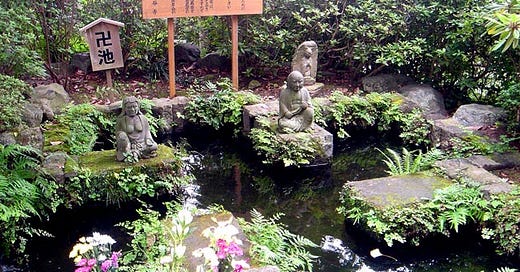[Note: Many of the photos in this Episode were provided by my lovely wife Lila, taken on our Japan trip in 2006.]
Aside from the famed Senso-ji Temple in Tokyo's Asukusa--to which I could ride my bicycle from my home of over two years--probably no temple in Japan was more familiar to me than Hase-dera in Kamakura, home of the 30-foot wooden Kannon. Let's visit that gorgeous place in this episode of
TEMPLE TALES!




